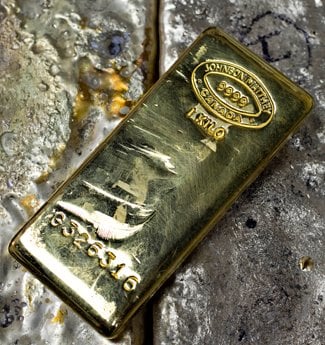Celestial jewels: the origin of gold

HAVE YOU EVER WONDERED where all the stuff we prize most highly comes from? Precious metals, diamonds, gemstones – everything that glitters and sparkles?
Precious stones are crystal structures containing common atoms. Diamond, for example, is just pure carbon, but sometimes there are impurities or crystal defects that add colour to the stone. It is formed deep in the Earth’s mantle at high pressures and temperatures.
Carbon itself is a common by-product of the internal processes of normal stars, and all Earth’s carbon came from many stars that existed before the formation of the Solar System.
But precious metals are different. The gold, silver and platinum in your jewellery originated in the extreme temperatures and pressures of a violently exploding star – a supernova.
These are the only conditions under which such ‘heavy’ atoms can form. The atoms then diffused throughout space, eventually winding up as one tiny component of the dusty gas cloud that became the Solar System.
All that glitters
Although we think of gold in the Earth’s crust as a rarity, there’s actually a lot more of it than there ought to be. By rights, most of it should have sunk into the infant Earth’s core along with the iron that makes up our planet’s interior. Astronomers believe that our gold must have arrived later, perhaps as a result of impacts by large asteroids in the Solar System’s turbulent youth.
Exotic though this might seem, it pales in comparison with other objects in the universe. For example, the recent observations made at the Australian Astronomical Observatory revealed the first star known to have clouds of zirconium in its atmosphere. Zirconium is the material from which fake diamonds are made, and this distant, hot sub-dwarf star is estimated to harbour more than 4000 times the world’s yearly production.
More peculiar still is the newly discovered planet of a remote star that is so rich in carbon that it has led to the idea of ‘diamond planets’. Imagine a world in which the landscape is dotted not with green hills, but with mountains of glittering diamonds. Perhaps it’s not only the stars of stage and screen that are adorned with jewels, but some real stars, too.
Fred Watson is astronomer-in-charge of the Australian Astronomical Observatory (AAO) and writes a regular column for Australian Geographic. This story was first published in the Apr-Jun 2011 issue of the journal. Find more of Fred’s stories here.
FRED ANSWERS YOUR QUESTIONS
If the Sun is the centre of our Solar System and we revolve around it, and planets revolve around other stars, is there something in the centre of the universe that we revolve around, too? – Tom Wallage, Seaforth, NSW
Fred says: The Sun is one of about 400 billion stars in our Milky Way galaxy, which all revolve around a supermassive black hole. But the Milky Way is just one of many billions of galaxies in the universe, which all pull on each other, giving them motions of their own. As far as we know, there is no overall rotation of the universe.
If you have a space question for Fred, email it to [email protected]
RELATED STORIES

